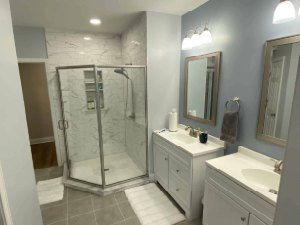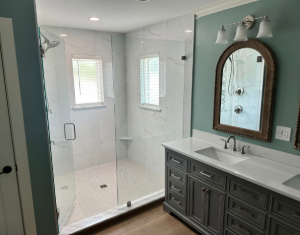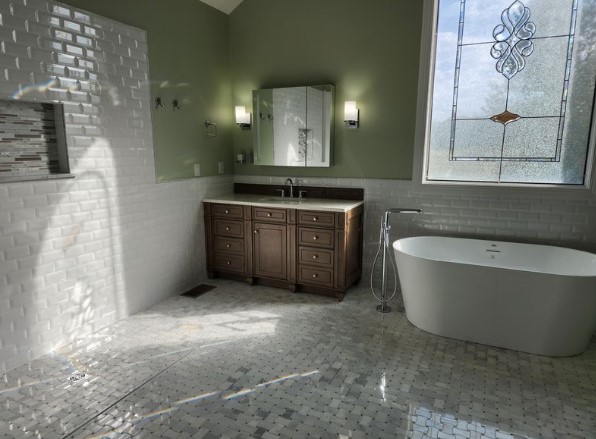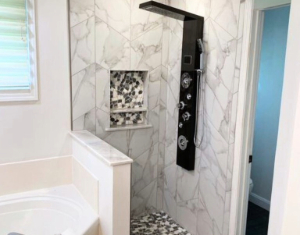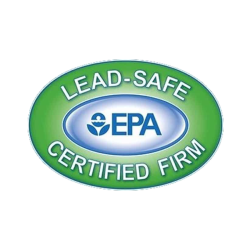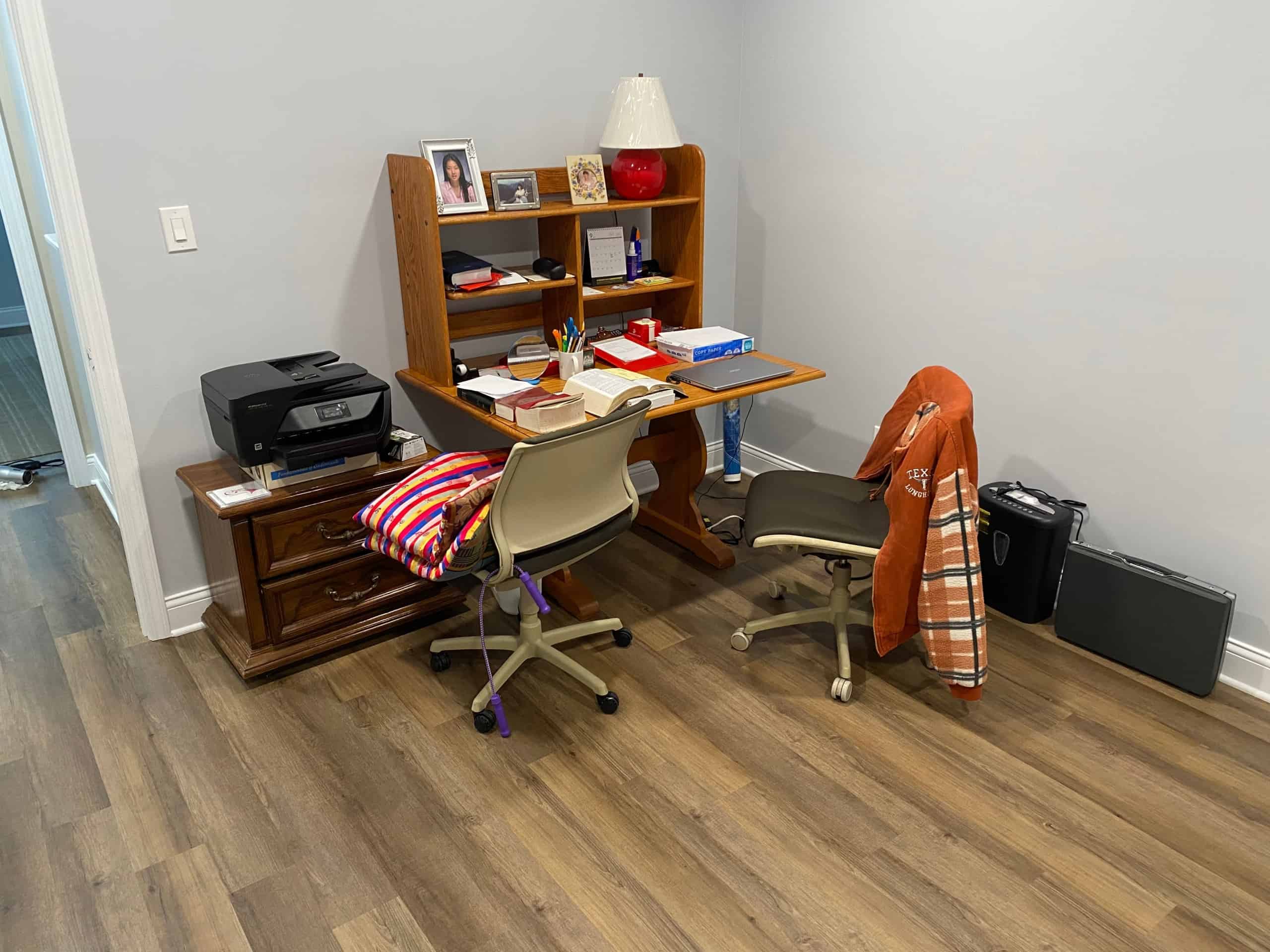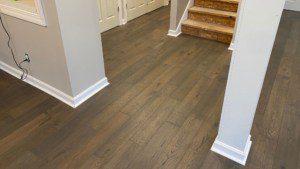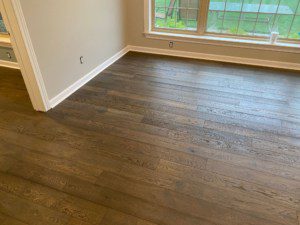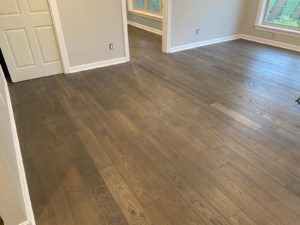Many Homeowners decide on laminate flooring because it is convenient and easy and anyone who can operate a chop saw and read a tape measure can install it themselves. In addition, laminate works great with radiant heat. It can look just like wood or tile and you may potentially save a lot of money choosing laminate over wood or tile. However, without due diligence, costly mistakes can be made. We have compiled some of the most common mistakes that DIY homeowners make when installing laminate flooring. We want to make certain that choice doesn’t turn out to be an expensive one.
Many of these same mistakes are made with engineered wood flooring. We wrote a comparison of laminate and engineered wood flooring here.
1. Not Letting Your Laminate Acclimate
Much like hardwood flooring, laminate needs to stay in its packaging and acclimate to the climate in your home for 2-3 days before it is removed from and installed. Many people assume that since laminate is a composite material, it won’t be affected by changes in humidity and temperature. That is only partly true. It is less affected than hardwood, but may still warp and buckle if installed without an acclimation period. Stack those boxes up somewhere in your home for 3 days before you begin installation.
2. Read The Instructions
Most laminate flooring is installed the same way. However, there are differences with different flooring, and to avoid waste and frustration, read the manufacturer’s instructions. It may sting the ego a little, but it will save you a lot of trouble. Reading the instructions and carefully following them ensures that your flooring will be installed efficiently and correctly and that it will last a long time.
Staggered Joints
The manufacturer’s instructions for laying laminate flooring will always tell you to stagger the joints. This is necessary to prevent the click lock mechanisms from disconnecting. Staggering the joints, or places where the planks meet end to end in each row, creates a much more solid structure. Also, having joints and planks that line up would look very strange. Bricks have staggered joints, hardwood has staggered joints, stagger your laminate.
Maintain Your New Flooring
When you read the manufacturer’s instructions, they will include the best strategy to maintain and care for your laminate flooring. This isn’t part of laying the flooring, but ignoring the care instructions is a big mistake. You won’t get as much life out of the flooring if you don’t take proper care of it.
3. Is There Room For Your Floor to Expand?
Expand? What do you mean? Its a floor, not foam. That’s right. Temperature and moisture causes laminate to expand and contract and this has to be accounted for. Especially considering that laminate is an interlocking, floating floor. This means that each piece will move around atop the subfloor, and that some room must be left at the edge of the flooring to account for this movement to prevent buckling.
Expansion Joints
In addition to edge expansion, expansion joints must be used in large rooms, or when laying laminate flooring in more than one room. It needs plenty of room to expand and contract so that it won’t buckle. Any room that is larger than 400 square feet needs an expansion joint. If you are installing laminate in 2 rooms, you need an expansion joint between the two.
Be careful with the adhesive you choose, and the amount you use for transition strips. If you get crazy with the adhesive, it will get onto the flooring and keep it from floating. Use silicone for this task to make certain that the adhesive has some flex.
4. Forgetting to Level is a Common Mistake Made When Laying Laminate Flooring
To prevent sagging and buckling and soft spots in the floor, it has to be within 1/8th of an inch of being perfectly level. You can grind or sand high spots down, and use self leveling materials to achieve this. Do not make this common mistake when laying laminate flooring. The laminate will thank you.
5. Don’t Skip the Underlayment
Underlayment is a thin layer of foam that is used as a shock and sound absorber and insulator beneath your laminate flooring. Without it, you and your flooring will be caused avoidable stresses. The floor will wear out much faster, and you will get worn out from listening to the loud sounds made when walking on it. In addition, the underlayment will help your floor stay warmer in winter. If that is not enough to keep your feet warm in cold weather, consider installing radiant heat beneath the flooring.
6. Don’t Forget The Moisture Barrier
If you are laying laminate flooring in a basement, no matter how dry you believe it to be, it needs a moisture barrier. There is a reason why there is always more moisture in the air in your basement. A moisture barrier aka vapor barrier will prevent moisture damage.
7. Half a Floor
We all have friends who start DIY jobs then take days, weeks, months, or years to finish them. I know someone who lived in an unfinished house for 15 years. Plywood floors. As soon as he finished it he sold the place and started the process over. Don’t be this person. Complete your laminate flooring installation in a day or two. Complete transitions and all other aspects of the installation. Avoid half of your floor getting damaged. However, don’t rush. Measure twice cut once. Take your time to make sure you do it right the first time.
8. Choosing Laminate Where it Does Not Belong
Laminate is better than hardwood at handling moisture, but it is still susceptible to moisture damage. Installing laminate in a leaky basement, bathroom, or kitchen means water damage is inevitable. It will warp, bubble, and become discolored. If you are looking to replace the flooring in a moisture prone area of your home, consider Luxury Vinyl Plank instead.
9. Don’t Forget to Seal It
Outside of the obvious moist areas of your home, laminate will still have liquids spilled onto it. Sealing your laminate to protect it from mishaps is a vital step in the installation process. We recommend using silicone caulk. In addition, be sure to mop up any spills immediately to prevent water damage.
Ready to hire a certified flooring and remodeling expert? Call or email Flooring Masters & Professional Remodelers today for a free consultation.

